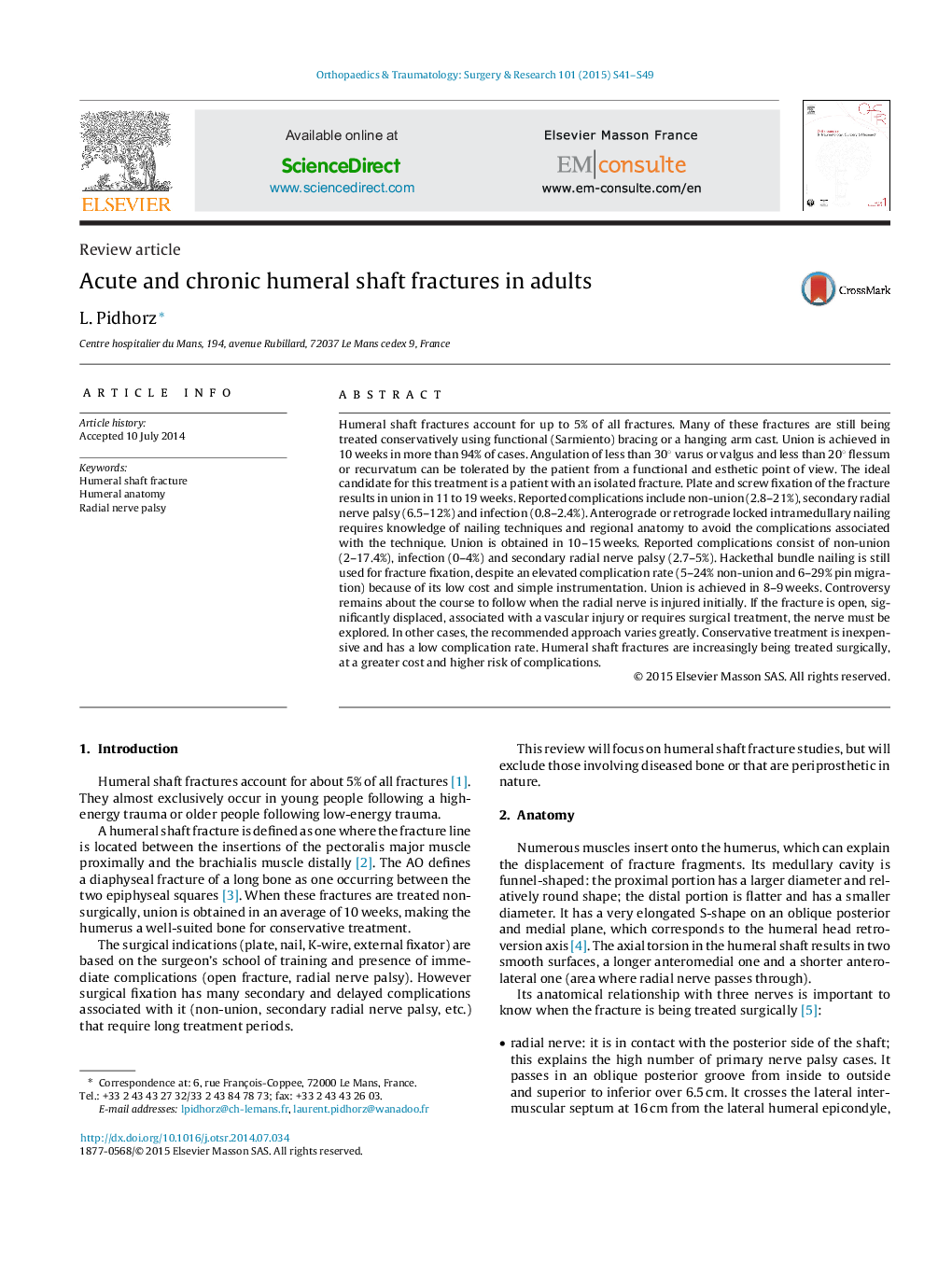| Article ID | Journal | Published Year | Pages | File Type |
|---|---|---|---|---|
| 4081098 | Orthopaedics & Traumatology: Surgery & Research | 2015 | 9 Pages |
Humeral shaft fractures account for up to 5% of all fractures. Many of these fractures are still being treated conservatively using functional (Sarmiento) bracing or a hanging arm cast. Union is achieved in 10 weeks in more than 94% of cases. Angulation of less than 30° varus or valgus and less than 20° flessum or recurvatum can be tolerated by the patient from a functional and esthetic point of view. The ideal candidate for this treatment is a patient with an isolated fracture. Plate and screw fixation of the fracture results in union in 11 to 19 weeks. Reported complications include non-union (2.8–21%), secondary radial nerve palsy (6.5–12%) and infection (0.8–2.4%). Anterograde or retrograde locked intramedullary nailing requires knowledge of nailing techniques and regional anatomy to avoid the complications associated with the technique. Union is obtained in 10–15 weeks. Reported complications consist of non-union (2–17.4%), infection (0–4%) and secondary radial nerve palsy (2.7–5%). Hackethal bundle nailing is still used for fracture fixation, despite an elevated complication rate (5–24% non-union and 6–29% pin migration) because of its low cost and simple instrumentation. Union is achieved in 8–9 weeks. Controversy remains about the course to follow when the radial nerve is injured initially. If the fracture is open, significantly displaced, associated with a vascular injury or requires surgical treatment, the nerve must be explored. In other cases, the recommended approach varies greatly. Conservative treatment is inexpensive and has a low complication rate. Humeral shaft fractures are increasingly being treated surgically, at a greater cost and higher risk of complications.
